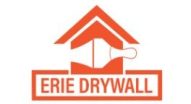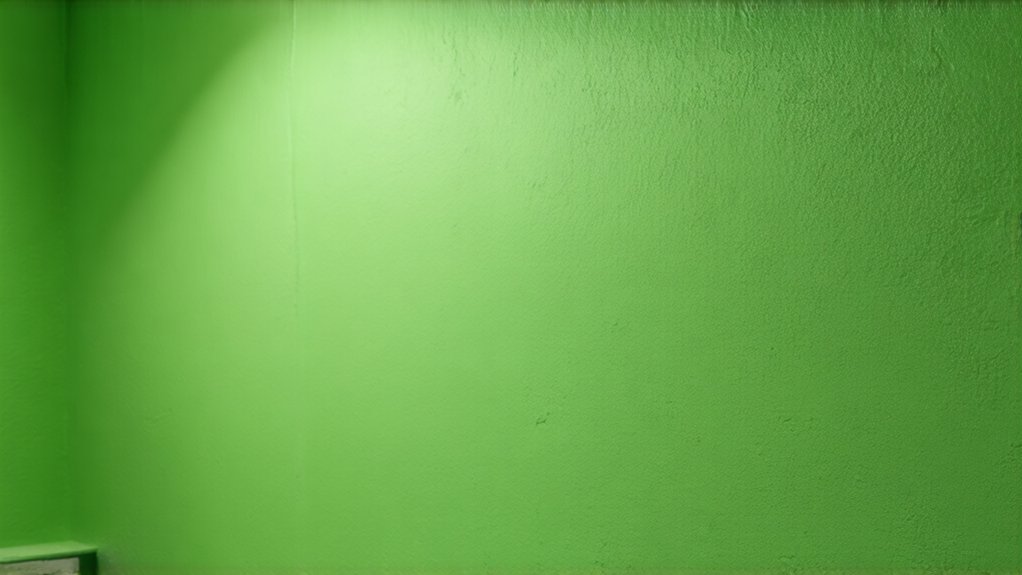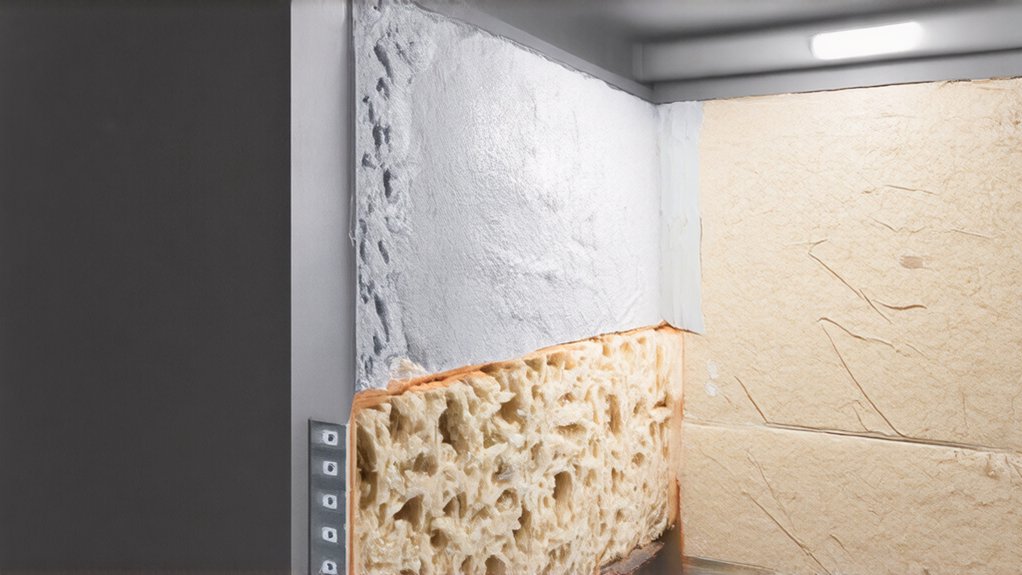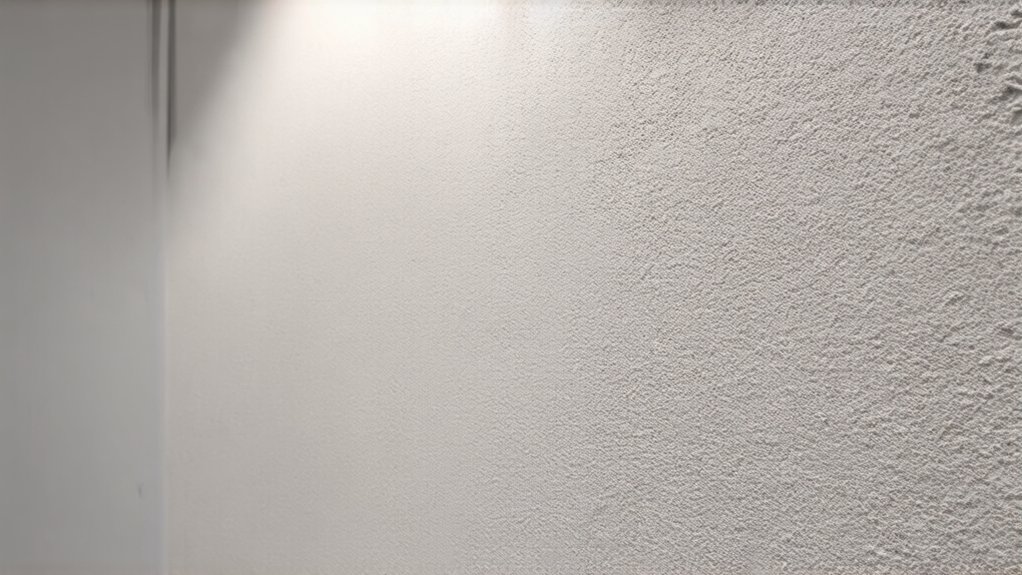When tackling high-moisture areas like bathrooms and kitchens, you'll want moisture-resistant drywall. Green board and cement board are your top choices, offering superior water and mold protection compared to standard drywall. They'll help prevent structural damage and maintain a healthy environment. Green board's water-resistant properties and cement board's durability make them ideal for wet spaces. Want to guarantee your walls stay strong and dry? Keep exploring for expert installation tips.
Understanding Moisture-Resistant Drywall Options
When it comes to moisture-resistant drywall, you'll find several key options that can protect your home from water damage and mold growth. Green board and cement board are two popular choices that'll help you combat humidity in bathrooms and kitchens.
You'll want to pay close attention to vapor barrier installation techniques, which can substantially reduce moisture gradient analysis risks. While standard drywall quickly deteriorates in wet environments, these specialized materials offer superior protection. Skilled drywall technicians in Erie, PA recommend selecting high-density, moisture-resistant materials to ensure long-lasting performance in challenging environments.
Green Board vs. Regular Drywall: Key Differences
Green board contains special water-resistant properties that make it ideal for high-moisture environments like bathrooms and kitchens. Unlike standard drywall, it has boosted mold resistance capabilities and lower water absorption rates, protecting your walls from potential damage. Residential drywall installation requires careful material selection to ensure long-term performance in challenging environments.
While regular drywall quickly deteriorates when exposed to moisture, green board offers superior protection. Its unique green-colored paper facing signals its specialized performance, helping you choose the right material for areas prone to humidity and water exposure.
Waterproof Drywall Solutions for Bathrooms
Three key waterproof drywall solutions can alter your bathroom's moisture resistant drywall qualities and protect your walls from potential water damage. Cement board offers superior protection in wet areas, providing a solid foundation for tile installations.
Green board, designed specifically for humid environments, contains special moisture-resistant additives that help prevent mold and mildew growth. Fiberglass-faced drywall represents another excellent option, featuring a water-resistant surface that shields your walls from moisture penetration.
When planning waterproof drywall installation, you'll want to choose materials that match your specific bathroom's moisture challenges and design requirements.
Installing Moisture-Resistant Drywall Correctly
Selecting the right waterproof drywall materials marks only the beginning of protecting your bathroom from moisture damage. You'll want to focus on proper installation techniques that prevent water infiltration and potential mold growth.
Start by ensuring your wall studs are completely dry and free from previous water damage. Use moisture-resistant tape and specialized waterproof joint compound when connecting drywall sheets. Apply a waterproof sealant around edges, especially near plumbing fixtures and corners. Don't forget to leave small gaps between drywall sheets to accommodate potential expansion and prevent cracking.
Maintenance Tips for High-Humidity Wall Surfaces
Consistent maintenance of high-humidity wall surfaces can prevent costly water damage and extend the lifespan of your bathroom's drywall. You'll want to focus on effective drying techniques and humidity control to protect your walls.
Regularly wipe down surfaces after showering, using a squeegee or absorbent towel to remove excess moisture. Install and use exhaust fans to reduce ambient humidity, ensuring they run during and after bathing.
Check for early signs of moisture damage, like discoloration or soft spots, and address them quickly. Proper ventilation and prompt attention can save you from expensive repairs.
Frequently Asked Questions
Can I Paint Moisture-Resistant Drywall With Regular Interior Paint?
You'll want to use humidity resistant coatings and waterproof sealants when painting moisture-resistant drywall. It's essential to choose specialized paint that'll protect your space and help you create a lasting, beautiful interior that stands up to moisture challenges.
How Long Does Moisture-Resistant Drywall Last Compared to Standard Drywall?
You'll find moisture-resistant drywall lasts considerably longer than standard drywall, reducing moisture absorption rate and preventing condensation. With proper installation and maintenance, it can extend your wall's lifespan by 2-3 times in humidity-prone spaces.
Will Moisture-Resistant Drywall Completely Prevent Mold Growth in Bathrooms?
You'll reduce mold risk with moisture-resistant drywall, but it's not foolproof. Proper vapor barrier installation and vital moisture control strategies are indispensable to prevent growth in high-humidity spaces like bathrooms.
Are Green Board and Moisture-Resistant Drywall the Same Product?
No, they're not identical. Green board offers increased water resistance, while moisture-resistant drywall provides improved moisture tolerance. You'll want to choose the right product based on your specific bathroom or kitchen renovation needs.
Can I Install Moisture-Resistant Drywall Myself Without Professional Help?
You can install moisture-resistant drywall yourself if you're comfortable with proper installation techniques and understand moisture barrier requirements. Just be prepared to carefully follow manufacturer guidelines and have some DIY experience with home renovations.



